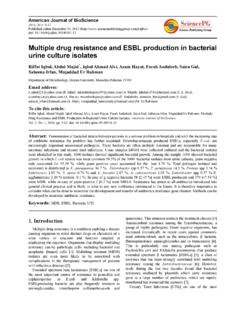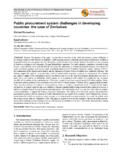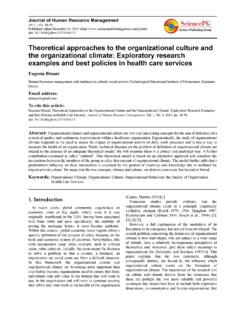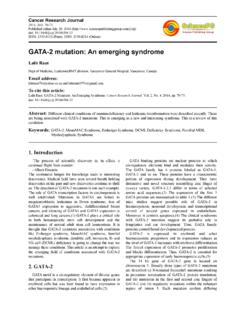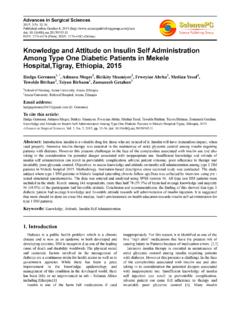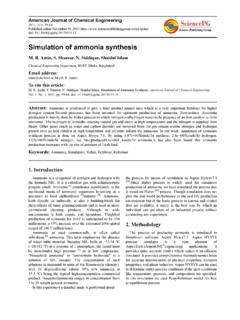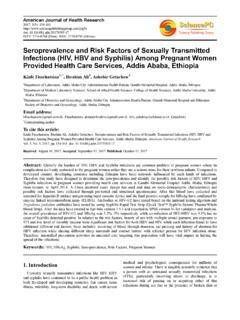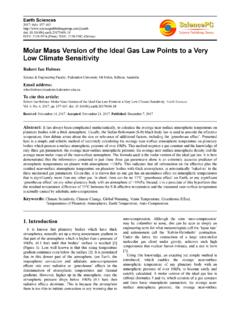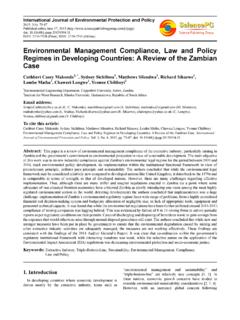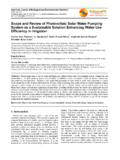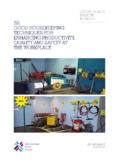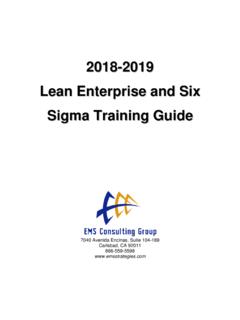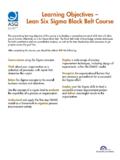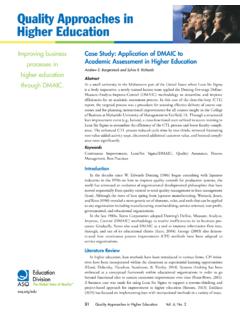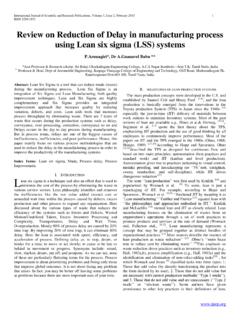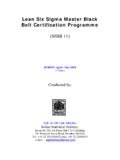Transcription of Seven wastes elimination targeted by lean …
1 International Journal of Economics, Finance and Management Sciences 2013; 1(2): 68-80 Published online April 2, 2013 ( ) doi: Seven wastes elimination targeted by lean manufacturing case study gaza strip manufacturing firms Khalil A. El-Namrouty, Mohammed S. AbuShaaban Dep t of Economics and political Science, Al-Oma Univesity, Islamic University- Gaza, Palestinian National Authority Email address: (K. A. El-Namrouty), (M. S. AbuShaaban) To cite this article: Khalil A. El-Namrouty, Mohammed S. AbuShaaban. Seven wastes elimination targeted by lean Manufacturing Case Study Gaza Strip Manufacturing Firms , International Journal of Economics, Finance and Management Sciences.
2 Vol. 1, No. 2, 2013, pp. 68-80. doi: Abstract: The research paper aims to investigate and analyze the current situation of wastes elimination of the manufac-turing firms in Gaza Strip and its important role for reducing the production cost; in addition it aims to promote lean thinking through studying the Seven wastes that are targeted by the lean manufacturing philosophy. wastes Relations Matrix (WRM) was implemented to analyze the effect of each waste on the other six wastes . The main findings are that lean manufacturing ( wastes elimination ) affects positively on reducing the production cost for the manufacturing business in Gaza strip.
3 Keywords: lean Manufacturing, Managers, Production Cost, Gaza Strip 1. Introduction A new vocabulary has developed in the past decade that stems from the Toyota Production System. lean manufac-turing is a concept whereby all production employees work together to eliminate waste (Meyers and Stewart, 2002). Manufacturers throughout industries are moving to a different system of production called lean Manufacturing. It is not talking about adding some new techniques onto how to build products, but actually changing the way of thinking about manufacturing (Abdullah, 2003). The Seven wastes that are targeted by the lean Manufacturing Philosophy are: Overproduction, Inventory, Over-processing, Motion, Waiting, Defects, and Transportation (Poppendieck, 2002).
4 Palestinian companies that are seeking the ability of an effective competition in the local as well as the global marketplace should be in superiority of producing their products within the least possible costs to achieve excellence in price and quality. There are 33933 working establish-ments in Gaza Strip including 3529 manufacturing firms. In reality, the manufacturing activities in Gaza Strip represent of the total economy in Gaza Strip (PCBS, 2008). Table 1. No. of the Manufacturing Firms Operating in Gaza Strip and their Distribution by the Employment Group Size. The Employment Group Size Total Economic Activity 100+ 50-99 20-49 10-19 5-9 1-4 5 5 36 158 442 2883 3529 Manufacturing "Source: PCBS, (2008).
5 Population, Housing and Establishment Census (2007), The Economic Establishments, The Final Results, Ramal-lah-Palestine". 2. History of lean After World War II, Japanese manufacturers were faced with the dilemma of vast shortages of material, financial, and human resources. These conditions resulted in the birth of lean manufacturing concept. Toyota motor company, led by its president (Toyota), recognized that American auto-makers of the era were out-producing their Japanese coun-terparts; in the mid 1940 s American companies were out-performing their Japanese counterparts by a factor of ten. In order to make a move toward improvement early, Japanese leaders, such as, Shigeo Shingo and Taiichi Ohno, devised a new, disciplined, process-oriented system, which is known today as Toyota Production System or lean Manufac-turing (Abdullah, 2003).
6 Taiichi Ohno, who was given the task of developing a system that would enhance productivity at Toyota, is gen-erally considered to be the primary force behind its system. International Journal of Economics, Finance and Management Sciences 2013, 1(2) : 68-80 69 After some experimentation, the Toyota production system was developed and refined between 1945 and 1970, and is still growing today all over the world.(Liker, 2004). In 1980s, products were being brought to the market with higher quality and lower price. Consumers came to expect higher quality and lower prices as a requisite for purchase. Some manufacturers faded away while others began to look dili-gently for better ways to compete (Hobbs, 2004).
7 In order to compete in today s fiercely competitive market, US manufacturers have come to realize that the traditional mass production concept has to be adapted to the new ideas of lean manufacturing because the Japanese companies developed, produced and distributed products with half or less human effort, capital investment, floor space, tools, materials, time, and overall expense (Khatri, , 2011). 3. Literature Review The effect of lean manufacturing on cost of production has been addressed by a number of researchers. Saleh (2011) found that the five studied Iraqi manufacturing firms possi-bilities of establishing the lean foundations are different according to the availability of thinking capital and there is a positive relationship between the thinking capital and lean foundations for all of the studied firms.
8 Badran (2010) con-cluded that managing the production processes is very im-portant for all kinds of organizations in Syria (General and private organizations, manufacturing and service organiza-tions). Forrester, (2010) stated that managers of the agricultural machinery sector in Brazil have supported a transition towards the adoption of lean manufacturing prac-tices and they have shown a significant improvement in their business performance including the production cost. El-Kourd (2009) concluded that using lean construction in Gaza Strip reduced the number of steps in the whole project by 57%, the non-value added decreased from 81% to 14% in the project duration, and the total cycle time of the project was reduced by 75%.
9 Enaghani, (2009) illustrated that lean is a culture for quality improvement starting with re-volutionizing the minds of employees while TPM is a me-thod in Ireland and Sweden. Hallgren and Olhager (2009) found that lean manufacturing has a significant impact on cost performance for the studied plants in 7 countries, whereas agile manufacturing has not, and agile manufac-turing has a stronger relationship with volume than does lean manufacturing. Rathi (2009) concluded that unneeded processing, transportation of materials and WIP inventory wastes are significant in job type PI and raw material in-ventory was the most prevalent waste for the process in-dustry sector.
10 AlDabbagh and Hassan (2008) stated that the studied company in Iraq has an accepTable (knowledge concerning lean manufacturing, and the basic requirements to apply lean manufacturing are available in this company. Piercy and Rich (2008) illustrated that services call centers for the studied 3 financial services companies in the UK can serve the traditionally competing priorities both of opera-tional cost reduction and increased customer service quality. Czabke (2007) concluded that all plants became more effi-cient and hence more cost effective and profiTable (after implementing lean manufacturing in the US and Germany.))
